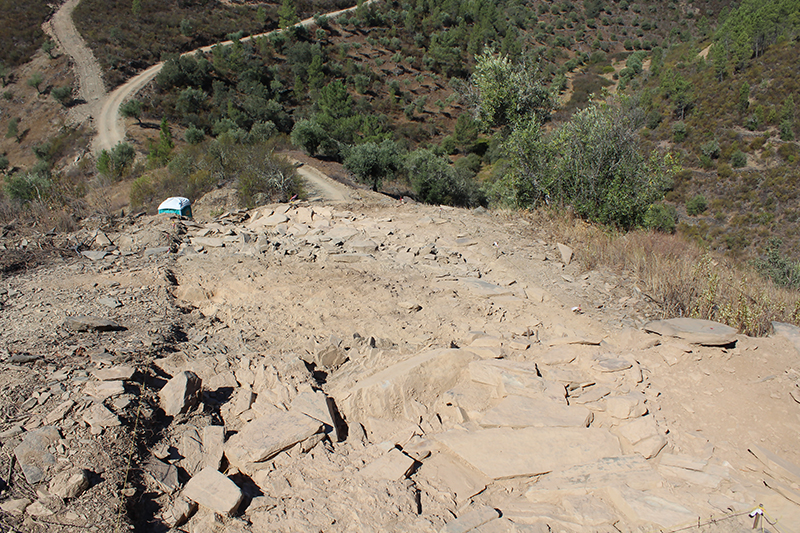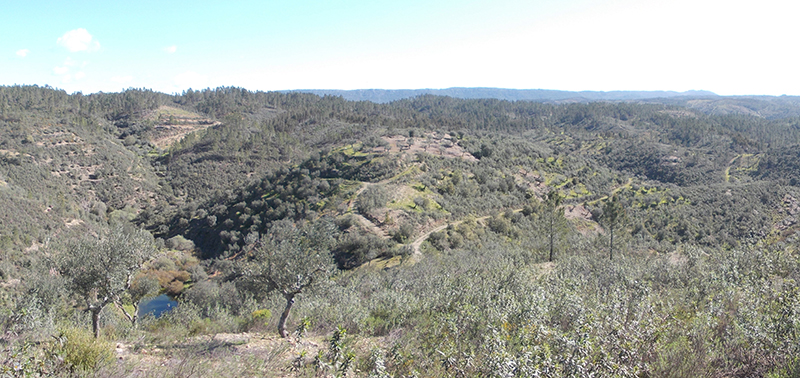Fieldwork
This listing expired on December 20, 2018. Please contact mail@archaeologicalfieldcamps-portugal.pt for any updated information.


Location: Proença-a-Nova, CASTELO BRANCO, PT
Season: August 13, 2018 to September 2, 2018
Application Deadline: May 31, 2018
Website: http://archaeologicalfieldcamps-portugal.pt
Program Type:
Volunteer
RPA Certified:
no
Affiliation:
Upper Tagus Study Association; Proença-a-Nova Municipal Council; University of Évora; University of Coimbra; University of Oporto; University of Algarve; Polytechnic Institute of Tomar; University of Alcalá de Henares; EMERITA Lda.; Superfície Geomática, Lda.; and Geopark Naturtejo
Project Director:
Paulo Félix - Upper Tagus Study Association
Project Description:
Following the first season of excavations, done in 2017, the main objective of the second campaign is to further investigate the structural and functional aspects of the organization of this middle to late first millennium b.c.e. hilltop fortified settlement. In 2017, we could confirm the presence of a probably very thick fortification structure, which, regardless the amount of destruction provoked by several centuries of agricultural use of the site, notably harsh in the last four or five decades, is still recoverable through archaeological methodology. In the 2018 campaign, we intend to increase the area of exposure of such fortification, as well as to find other structural evidences of Iron Age constructions.
The settlement is located at a prominent hill bounded by a stream that draws a deep meander, which stresses even more the defensive traits of the emplacement. The most accessible path is the southwestern slope, where we anticipate the existence of the main entrance to the hillfort, a common feature in contemporary settlements all-over the Southwest of the Iberian Peninsula. The defensive wall is made of blocks and slabs collected from the local bedrock (schists and greywackes), placed in a very well- structured way and cemented with a sort of clayey mortar.
We estimate this settlement was occupied in the period corresponding to the Late (or, Second) Iron Age, between the 5th/4th and the 1st century b.c.e., being the last date a terminus ad quem inferred from the lack of any material indication related to the control of the region by the Romans.
Period(s) of Occupation: Late Iron Age (5th to 1st centuries BC)
Notes:
Lusitanian Period; Lusitanian Hillfort; Iron Age hillfort
Project Size: 1-24 participants
Minimum Length of Stay for Volunteers: Two weeks
Minimum Age: 18
Experience Required: None
Room and Board Arrangements:
Fees include accommodation, meals (breakfast, lunch and dinner), transport for the whole programme (including days off) and documentation. There is free access to wireless internet hotspots at the accommodation (Seminary) and other areas (Cafeteria of the Urban Park). For participants from countries outside the Iberian Peninsula, the prices include translation to English and transport from Lisbon International Airport to CAPN (roughly 230 km), where appropriate. Alternatively to the basic accommodation, CAPN may provide hotel accommodation (four stars) with breakfast, access to the pool, gymnasium and sauna (Hotel das Amoras), at an extra cost. Cost: Two weeks: 750.00 € Three weeks: 1100.00 €
Paulo Félix
Proença-a-Nova Town Hall
Proença-a-Nova
Portugal
mail@archaeologicalfieldcamps-portugal.pt
Phone: 3.51914E+11
The AIA is North America's largest and oldest nonprofit organization dedicated to archaeology. The Institute advances awareness, education, fieldwork, preservation, publication, and research of archaeological sites and cultural heritage throughout the world. Your contribution makes a difference.
Notifications